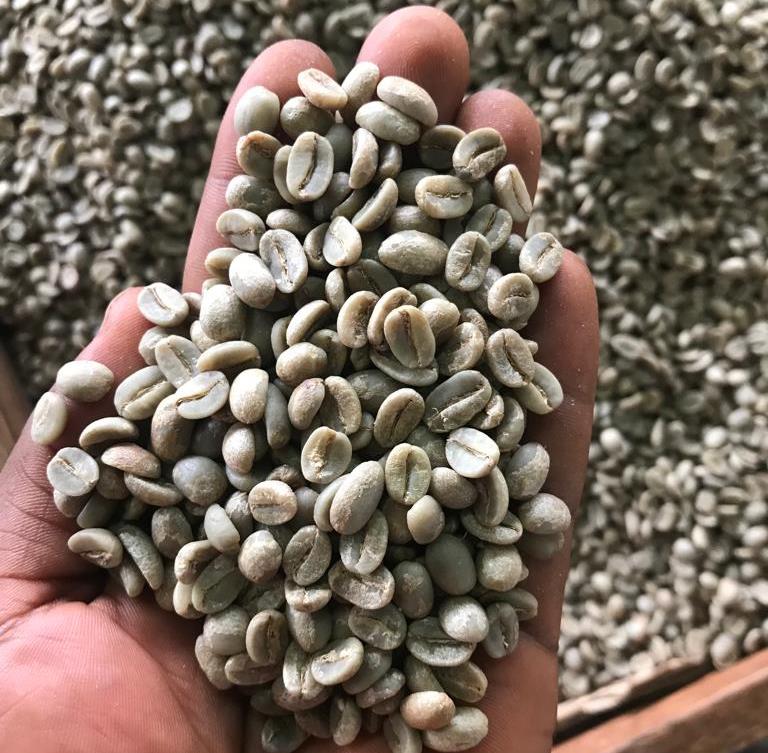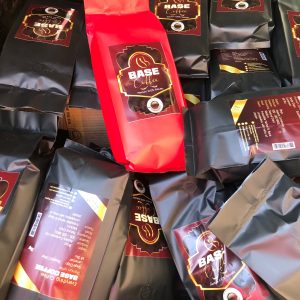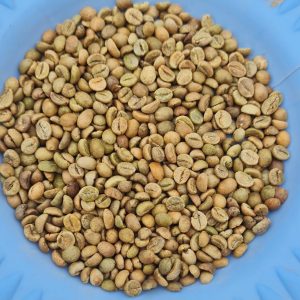COFFEE PROCESSING
Harvesting:
Fruits of coffee trees are called ‘coffee cherry’ and they are what are harvested after 3-5 years when the trees have borne fruit. When they ripen, they become bright red in colour. There are two methods of harvesting coffee- selective picking and strip picking. Selective picking entails picking the ripe cherries only, thus it is done frequently. This technique is commonly used to harvest high quality Arabica beans. Strip picking entails removing all of a branch’s cherries in one instance. Every year, at least one primary coffee crop should be harvested but some farmers get secondary crops depending on their planting approaches and their harvesting styles.
Processing
Harvested coffee cherries are processed as soon as possible to keep from getting spoiled, this can be done in two ways, known as the dry and the wet methods;
The Dry Method
This is the ancient method of processing cherries and is still popular in regions where water is scarce. This method is also known as ‘unwashed’ or ‘natural’ processing. Most people who own small-scale farms use the dry method. The fresh cherries are spread out on a large surface and left to dry in the sun for 15 to 20 days. They are usually put on drying beds slightly raised from the ground, to ensure air circulation around the berries. They are regularly turned and raked throughout the day to avoid fermentation and to ensure they dry evenly. The berries are then covered at night to keep them from absorbing moisture. Depending mainly on the weather conditions, the drying process may take several weeks for each individual picking run, until picked cherries have a moisture content of less than 11%. At this stage, the outer layer will have dried up and turned black and brittle. The drying makes it relatively easy to remove the outer skin.
The Wet Method
This method is a relatively new way of removing the skin from coffee cherries. It’s called ‘wet’ because it uses water to both move the coffee fruit through the process and to extract the beans. The wet method involves cleaning the cherries and removing unripe and overripe cherries; just as in the first method. The cherries are then put through a pulping machine that squeezes out the skin without damaging the beans. This is made possible by the fact that coffee beans are relatively hard. If some berries are still left with the pulp on, they are not ripe enough.
These beans are hand sorted and are used to produce lower quality coffee. Coffee pulping leaves mucilage, which is then put into large tanks with enzymes being added to help get rid of the sticky substance. Beans are put in large tanks and stirred often to ensure all the mucilage is dissolved. The entire process takes approximately 24 hours. It’s important to remove all the mucilage to ensure beans are left with the flavour that was developed prior to this processing. After it has dissolved the beans are washed repeatedly to remove any leftover stickiness. The naked coffee beans are then dried in the sun for a day or two. It is worth noting that drying can also be mechanized. At this point the coffee beans leave the processing area and are sorted into different grades. The dry beans are called parchment coffee.
Coffee milling process
Before being taken to the market, the dried coffee beans are processed as follows:
Hulling:
Hulling parchment coffee involves removing the dried husk; exocarp, mesocarp and endocarp.
Polishing:
Coffee polishing is an optional step that is skipped by some millers. It involves getting rid of any sliver skin that may have found its way through hulling. Polished beans are considered to be of a higher quality than unpolished ones.
However, in terms of content, there is little difference.
Grading:
The beans are then sorted and graded based on size and weight. The polished beans are also checked for colour inconsistencies and other flaws with human hands being used to remove any flawed beans. The process is painstaking and can take several hours. A better method is sorting them pneumatically using an air jet to separate the light from the heavy beans. The beans are sized by putting them through a series of screens with holes that only allow a certain size of beans to pass through. The sizing takes place on a scale of one to ten. At the end of the milling process, only the finest beans are packaged for sale to the high-end markets.
Coffee tasting process
The packed coffee is repeatedly tasted to additionally check and define its taste and quality. The process is called capping and it takes place in a special room designed to enhance it. Tasting helps people to tell where the coffee is from. The process shouldn’t intimidate you; anyone can take part in it. It involves gurgling coffee to the back of your mouth and identifying which flavour it is. The process is quite similar to a wine tasting event. Some of the terms tasters use are:
Acidity: Acidity describes the level of acidity of coffee. High acidity coffee is thought to be of a higher quality. Low acidity coffee is usually called soar
The body and aftertaste are other terms used to describe the coffee. The ‘body’ refers to how the coffee feels in the mouth – for instance, it may feel heavy or extremely light. This quality is, to some extent, constant and does not depend on individual tastes.







Reviews
There are no reviews yet.